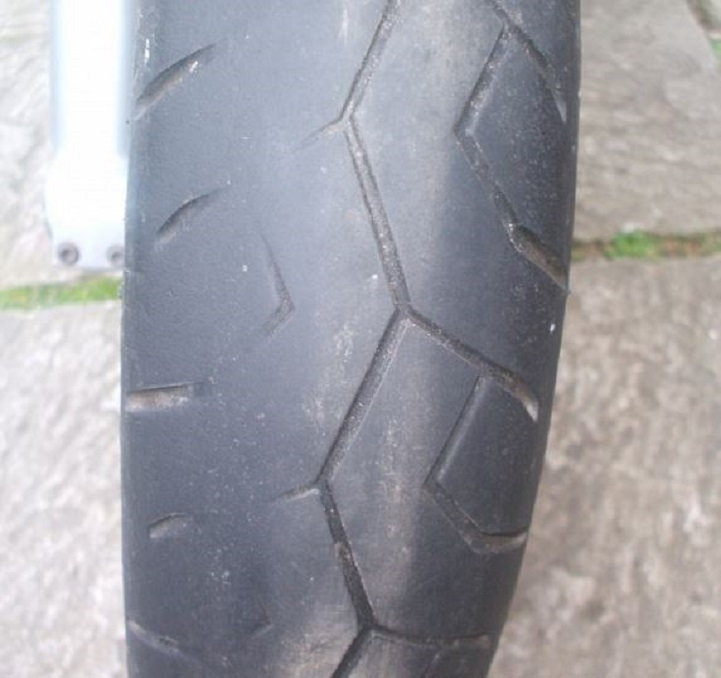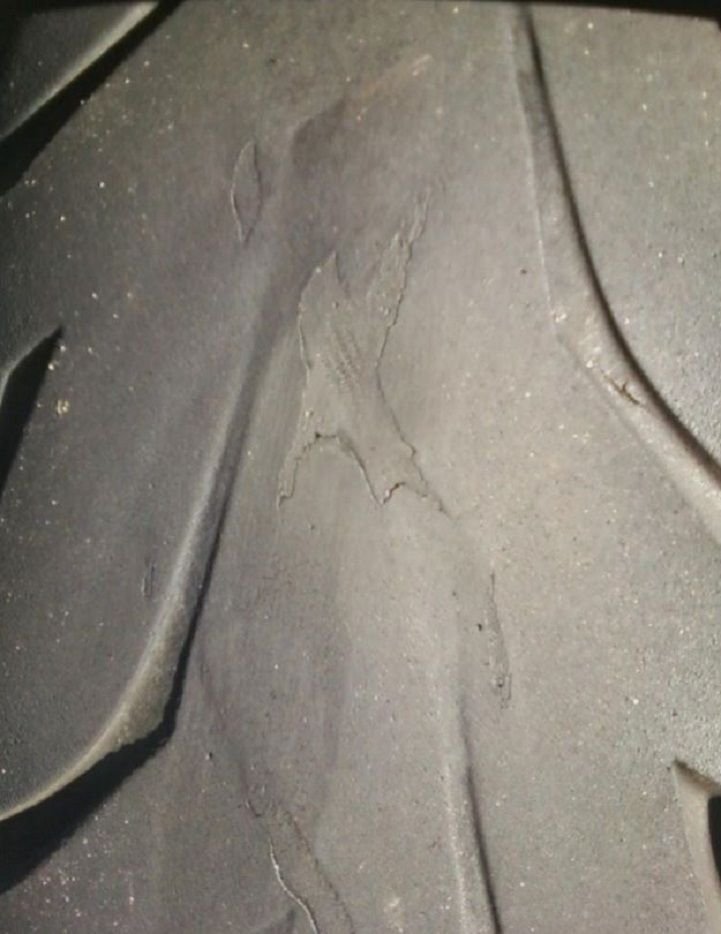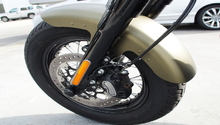Harley Davidson Softail: Tire Wear Diagnostic
The tires on your Softail are the only things keeping you right side up sitting in the saddle. Keep them in good working order and address any concerns immediately.
This article applies to the Harley Davidson Softail (1995-2016).
The tires on your bike are much too important to neglect. Keeping the rubber side down is the single most important goal of any ride you take, whether it's on the boulevard for the daily drive or on the super slab for a cross country adventure. Don't ignore the little telltale signs that something is amiss, no matter how slight or insignificant you may think it is. Your tires are one of the first indicators you'll get that something isn't quite right with your bike. Uneven wear, wobble or tracking and drifting issues mean that something needs addressing with your Softail. Learn what some of these issues are, what the potential problems could be, and get them addressed before you find yourself in a very bad situation. Learning these signs are key to not only keeping you safe, but keeping that hard earned cash in your own pocket to use on modifications you've been wanting since you bought your bike.

Materials Needed
- Two good eyes
- Ruler or tape measure
Step 1 – Inspect front tire for uneven wear
Your front tire may be wearing more on one side than the other.
Many front tires will wear unevenly, and this can vary from bike brand and model, as well as tire model and manufacturer.
- Many roads are built with crowns to shed rain. Constantly riding in one lane over time will wear the tire according to the crown.
- Another common factor with this is riding style; most people make harder and more frequent right turns than left turns.
- Check the alignment of the rear tire and make sure that it is straight and evenly spaced on both sides. If the rear tire is out of alignment, it could cause tracking problems.
- A less common component to check is the front wheel bearings for excessive play. Change or repack the bearing and tighten to the correct torque.
- Check the fall out on the front end. Your user's manual explains the process and how to make adjustments. A misalignment of the front end could cause the bike to pull to one side or the other.
Uneven wear is pretty common and normal for a front tire and no real cause for alarm. Consider getting a harder front tire that will not wear out as quickly to minimize the unevenness. If you see uneven wear, and notice the tire pulling to one side, you may have a bent frame or rear wheel alignment issue.

Pro Tip
Even if you have plenty or tread left in most of the front tire, consider changing it if one side is considerably more worn than the other. A worn tire will cause handling issues and that is not something to be taken lightly.
(Related Article: How to Check Tire Tread - HDForums.com)
Step 2 – Inspect the rear tire for uneven wear
If your problem is the rear tire, several factors come into play and should be addressed sooner rather than later.
Even while wearing unevenly, the characteristics of that wear between the front and rear tire varies a great deal. While you'll see more left versus right wear patterns on the front tire, the rear tire will usually show wear either on the outer edges or straight up in the middle. In some cases, you'll find some odd patterns with the rear tire, such as cupping, scalloping or bare, flat spots right in the center. These could be from the way the bike is ridden, such as hard, fast, and locking up the brakes, causing the rear wheel to skid or from other issues. If you aren't a hard rider and never lock them up or skid it, a bald spot may mean that you have a bad tire. It happens sometimes, and will vary from manufacturer to manufacturer. With tires, sometimes you get what you pay for, but you will likely have as many owners telling you that a particular cheap tire works great and another owner will share his horror story with it.
- Most rear tire wear can be attributed to how the bike is ridden.
- Uneven tire wear on the rear could be from a misalignment, which is fairly easy to correct. This is not a common issue, however.
- If your rear tire is out of balance, this could also cause some uneven wear.
- Tires that wear very poorly or unevenly and are well under the general mileage expectations should be considered defective and discussed with the tire manufacturer.

Step 3 – Check rear tire clearance
If your symptoms include tire rubbing and not wear issues, you may have an alignment problem.
Your rear tire may be rubbing against the drive belt or another hard part, like the fender. The rear tire on many Harleys is a tight fit, to give the bike that low, classic, hardtail look. If you try to run a tire even one size wider, or use a different brand of the same size tire, sometimes it will rub hard parts or the belt drive. While it may look like it fits, in many cases it actually doesn't and could ruin the drive belt. If you purchased your bike pre-owned, check the rear tire out. The previous owner may have had it aligned with the rear wheel offset well to the right to avoid the rub, especially if your ride is prior to year 2000 when Harley used wider drive belts.
- The front pulley at the transmission is wider than the rear pulley for the drive belt, so you have some wiggle room to space the pulley on the wheel, or the wheel on the bike.
- Use either a 1/4", 1/8" or 1/16" spacers in order to achieve at least a 1/16" clearance between the belt and the tire.
- Check the that wheel is straight in the swing arm and adjust with the axle screw adjusters, being careful to keep the belt tension correct.
- A straight, evenly offset wheel will allow your bike to function properly without tracking to the right and no more belt rubbing.

Related Discussions
- Uneven Front Tire Wear? - HDForums.com
- Uneven Tire Wear - HDForums.com
- FXDWG Stock Dunlop Rear Tire Problem - HDForums.com
- Tire Rub Problems - HDForums.com
- 2010 Limited Rear Tire Problem - HDForums.com







